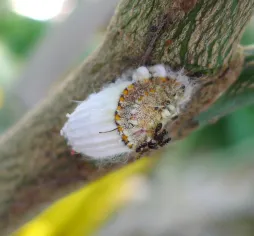Cryptanthus acaulis, an earth star
While cryptanthus 'Pink Starlite is known as a starfish, Cryptanthus acaulis is often referred to as an earth star. This plant, native to the forests of southeastern Brazil, has the same asteroid shape. And like it, it belongs to the Bromeliaceae family.
How to recognize Cryptanthus acaulis?
Cryptanthus acaulis is an evergreen perennial. Smaller than cryptanthus zonatus, it measures between 8 and 15 centimetres in height, with a maximum width of 30 centimetres.
Cryptanthus acaulis has no stem. Its shallow root system enables it to efficiently absorb water and nutrients from the upper layers of the soil.
Cryptanthus acaulis stands out for its rosette-shaped leaves. They are long, pointed, narrow and arched, with a leathery texture. The margins are wavy and thorny. Pale to medium-green in color, with darker stripes tending towards reddish-brown, they have light-gray scales on the underside.
Cryptanthus acaulis produces small, inconspicuous white flowers, hidden inside the leaf rosette. They bloom during the summer months.
The plant is not known to be toxic to humans or pets.
Our maintenance tips
Cryptanthus acaulis are slow-growing. Often, one repotting after purchase or when taking cuttings is enough for their entire life. You can, however, repot the mother plant after flowering to give the offshoots room to develop.
Watering
When the soil has dried on the surface, you can water. Use non-calcareous water at room temperature, such as rainwater. If you don't have any, you can use tap water that you've left to stand.
Drain off any water that collects in the planter or dish. It can rot the roots.
Spray
Mist your Cryptanthus acaulis with non-calcareous water, such as rainwater or demineralized water.
Fogging temporarily increases humidity and helps prevent the appearance of pests.
Repotting
Every spring, repot your Cryptanthus acaulis to give it more space.
Cryptanthus acaulis like light, acidic soil. To meet their needs, it's best to create your own substrate by mixing equal parts sphagnum moss, sand and heather soil.
Get a pot with a ten-centimeter diameter hole and fill it with your mixture. Water generously.
Plant your Cryptanthus acaulis in the center. Pack gently.
In summer, you can place your pot on a dish of moist clay balls to increase humidity.
Fertilization
Add a special Bromeliad foliar fertilizer to the water when misting. Follow the dosage instructions to avoid damaging the foliage.
Prune
To encourage the growth of your Cryptanthus acaulis, prune regularly.
Using clean, sharp pruning shears, remove damaged or dried-out foliage.
Cutting
Wait until the end of flowering to propagate your Cryptanthus acaulis.
Wait until the shoots have started to develop their own root system before removing them. When they are at least a third of the size of the mother plant, you can separate them. You can do this by hand, simply by pulling on the rosette or using a clean, sharp tool.
Fill a perforated pot about ten centimetres in diameter with a mixture of peat (50%) and sand (50%). You can also use the same substrate as for an adult plant, mixing one third sphagnum peat moss, one third sand and one third heather soil.
Water the potting soil. Plant your offshoot in the center and tamp lightly.
Disease / Threat
Information
| Family | Bromeliads - Bromeliaceae |
| Type | Cryptanthus - Cryptanthus |
| Species | Cryptanthus acaulis - Cryptanthus acaulis |
| Lifecycle | Perennial |
| Foliage | Evergreen |
| Exposure | |
| Substrat | |
| Planting method |
In pots |
| Category | |
| Tags |
Beginner Fritillary |
| Origin |
South America |
| Hardiness (USDA) | 11a |
| Leaf color |
|
| Flower color |
|
Discover plants from the same family
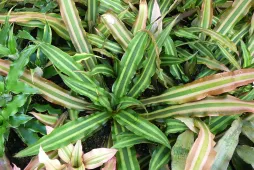
Cryptanthus bivittatus
Discover
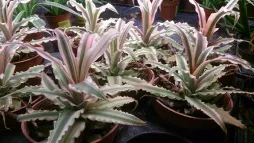
Cryptanthus 'Pink Starlite'
Discover
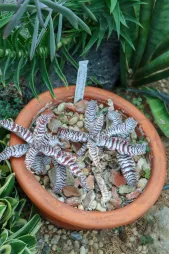
Cryptanthus zonatus
Discover
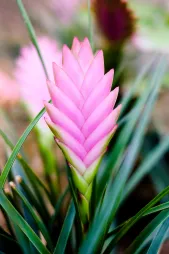
Tillandsia racket
Discover












